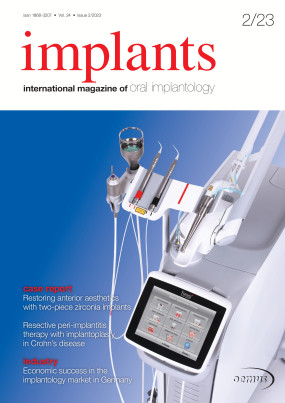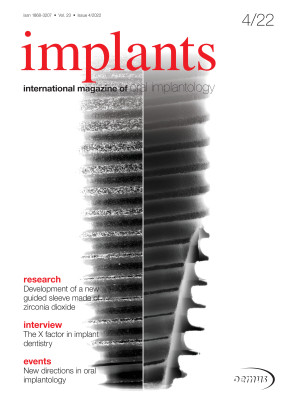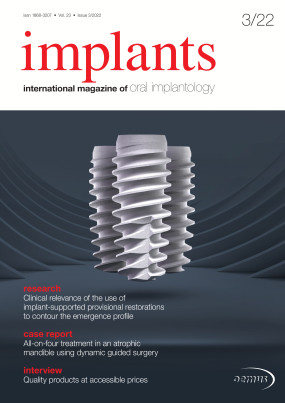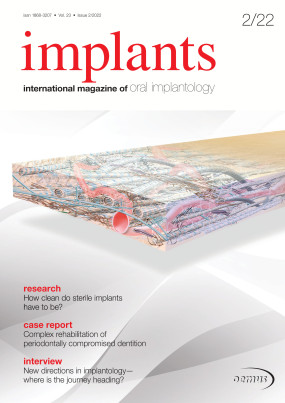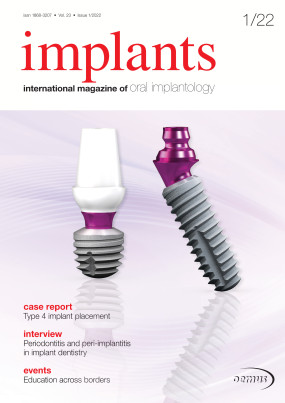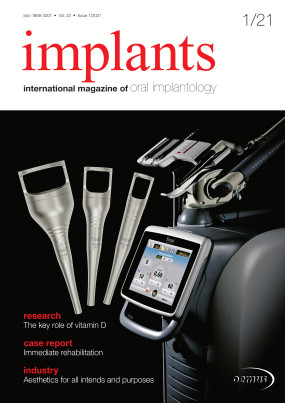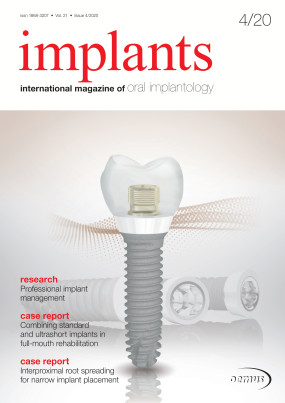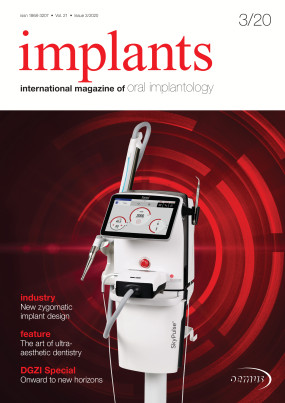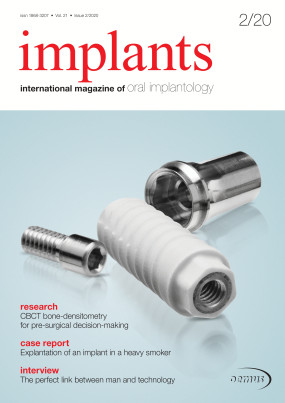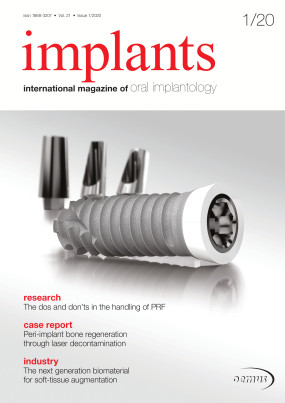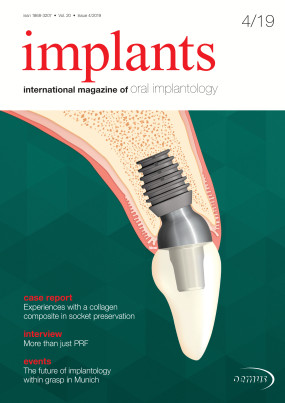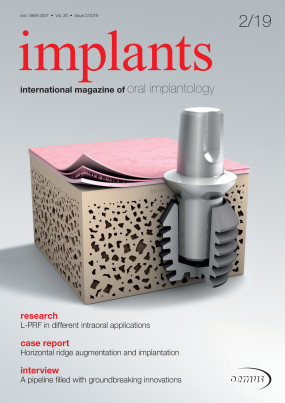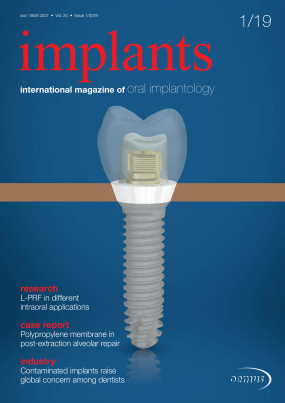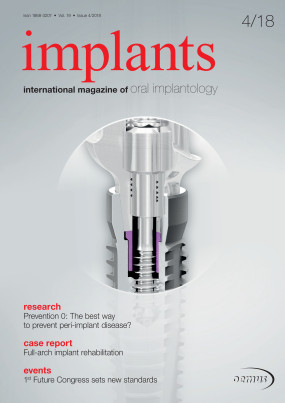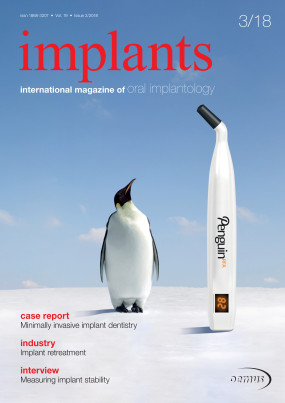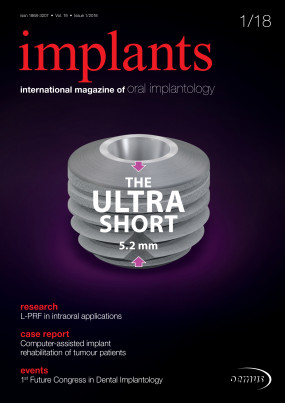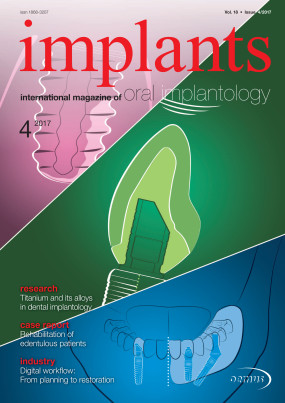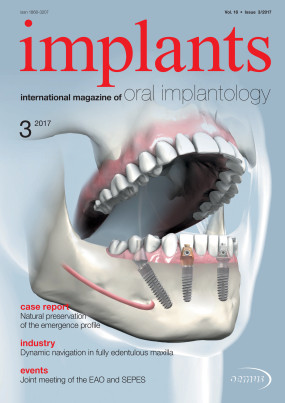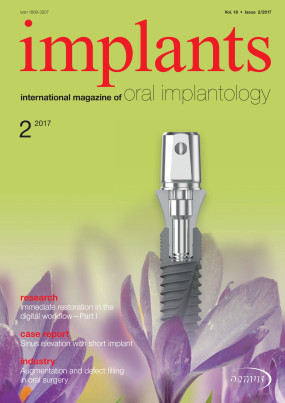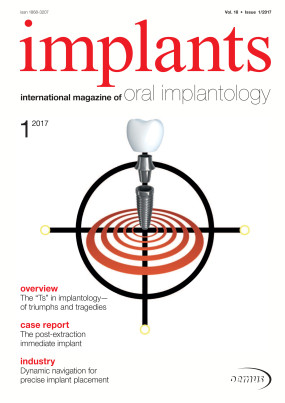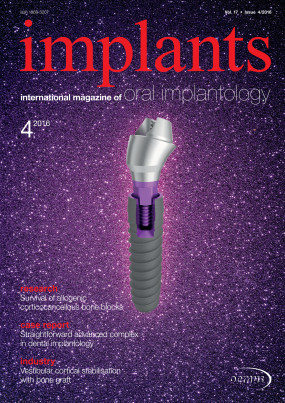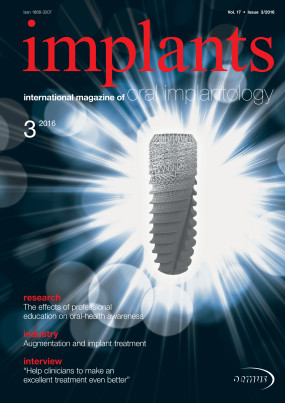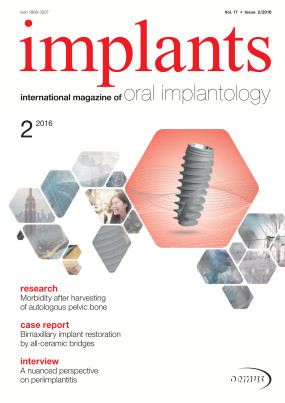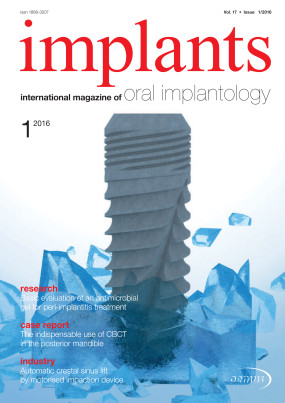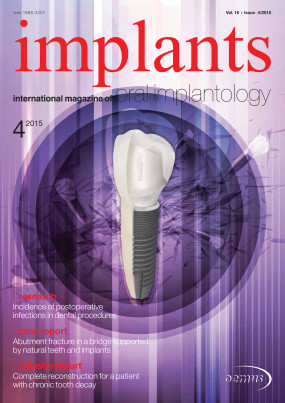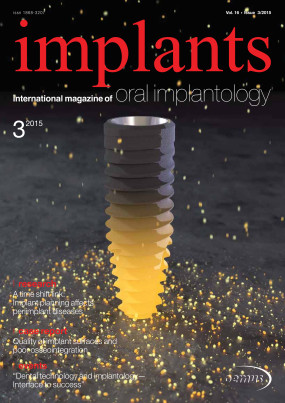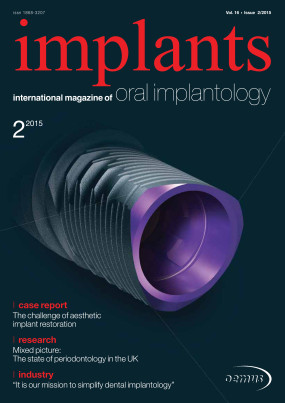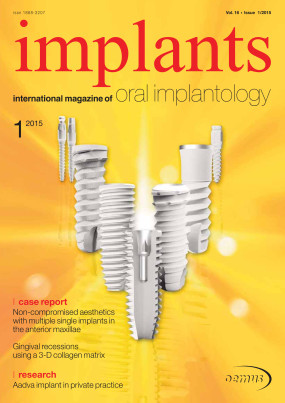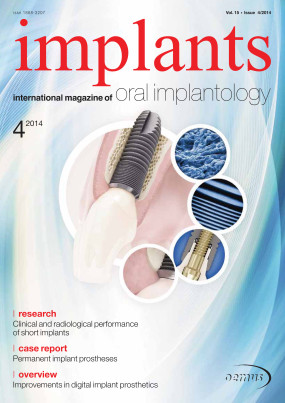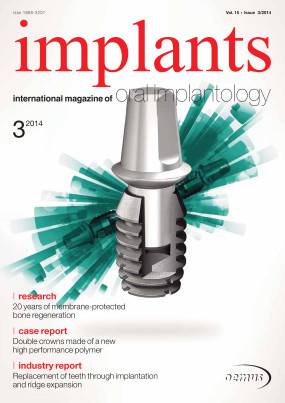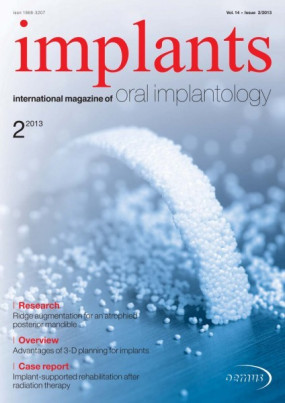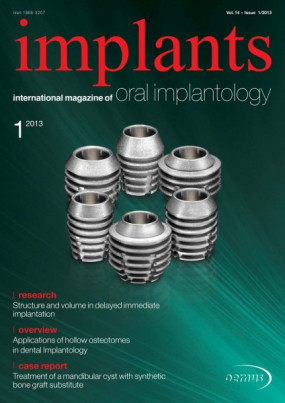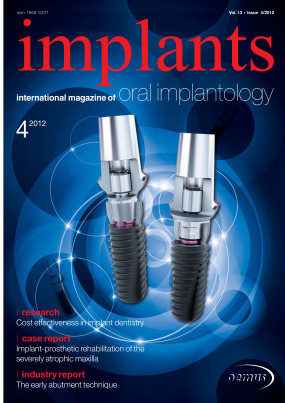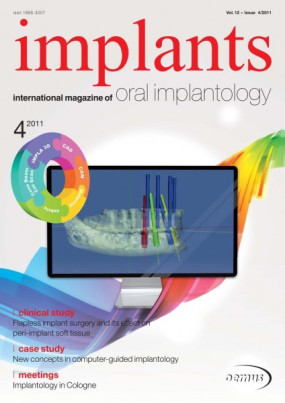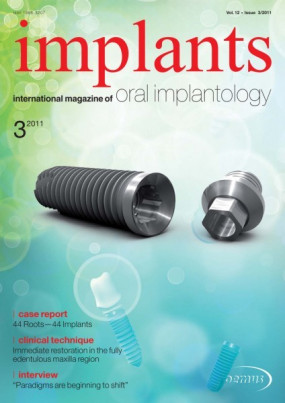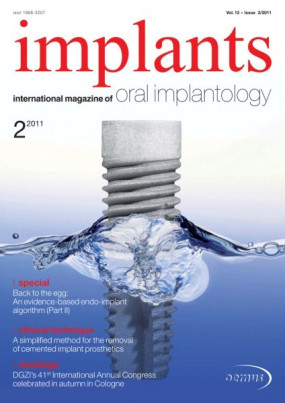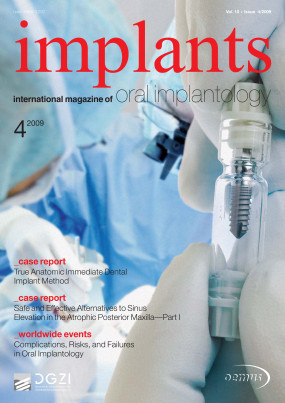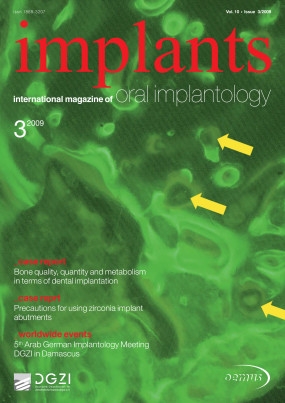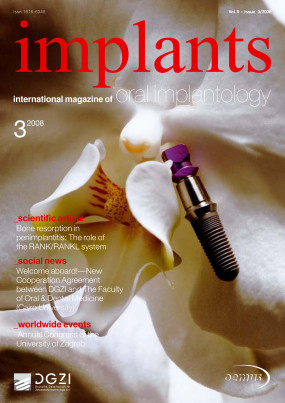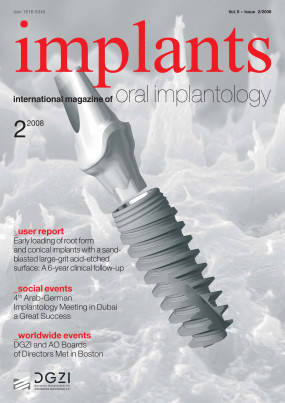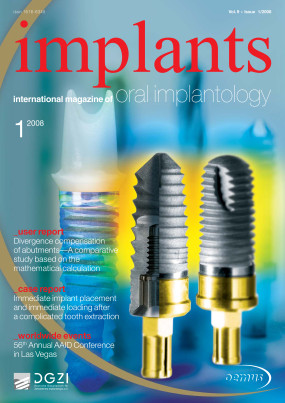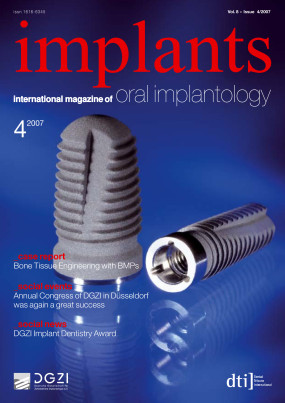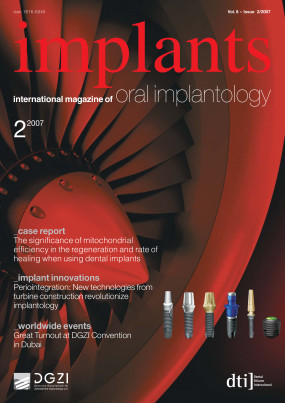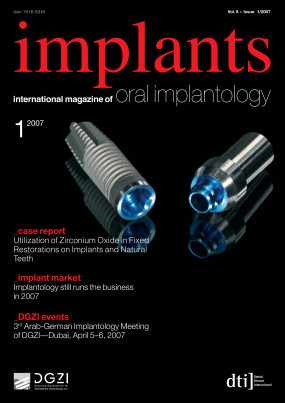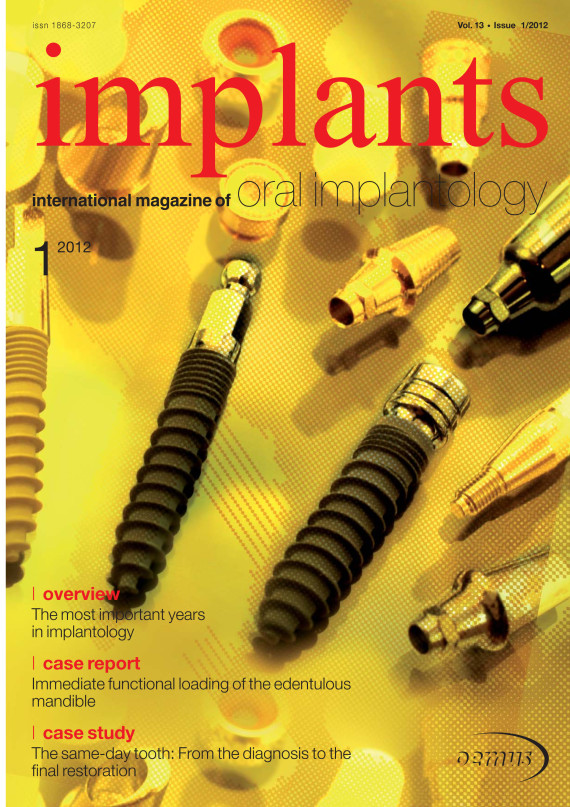Inhaltsverzeichnis
3
Extreme points of view tamper with their seemingly convincing advantage of making hard facts appear as simple, clear and understandable pieces of information. Extreme points of view, however, also have one distinct disadvantage: They are usually simply wrong...
6
It all started with an inquiry from a well-known professional journal of implantology asking for a contribution to acknowledge their having been in business for 15 years. Then there was the incidental telephone call by an academic teacher who had accompanied and supported me in my first steps in implantology. When I asked him about the upcoming publication project, I received a both spontaneous and surprising reply, “The last 15 years—those were the most important years in implantology”! This from a renowned university professor who was instrumental in establishing implantology—I was impressed. Later on I had to ask myself, “Is this really true?” The result of my tracing this development is this article—a personal retrospective...
14
Consideration of an uncommon approach in the atrophied posterior zone: Extraction-plus technique (Part II)
Drs Maen Aburas, UAE & Ralf Gutwald, Germany
In the past, it was a significant challenge for clinicians to achieve implantation in the alveolar ridge of the posterior zone with restricted bone height, for which the alternative treatment choices were limited. However, procedural and technological developments have enabled implantation in most cases of severe bone resorption through the use of complex bone-augmentation techniques, such as bone transmission, sinus lift, distraction and nerve transposition, and the use of bone substitute, membrane and nail fixation, which might increase the risk of complication and failure...
18
Immediate functional loading of the edentulous mandible - Tapered implants & overdentures
Dr Suheil M. Boutros, USA
The aim of this case report is to demonstrate the concept of immediate functional loading in the mandible using unsplinted implants to support a locator attachment-supported overdenture...
22
New concepts in computer-guided implantology: Error analysis and accuracy verification (Part II)
Dr Gian Luigi Telara, Italy
In recent years, there has been a growing interest in guided implantology. A digital work-up is certainly of great benefit for clinicians to better understand their patients’ bone morphology and density and consequently to plan implant positions correctly, and to have their hands guided during implant placement by means of a surgical guide. There are many systems on the market today and many researchers have studied post-operative CT scans and planning scans by means of superimposition, in seeking to understand the secret to achieving perfect correspondence and the best system, but this perfect accuracy has not yet been found and there appears to be a mismatch between planning and the actual implant position...
28
The restoration of missing anterior teeth is both a challenging task for the clinician and a stressful treatment for the patient. The final aesthetic result is of major importance—for the patient, dentist and dental technician. Moreover, the patient has high expectations, aesthetic demands and concerns about the cosmetic result of the final restoration. Even before treatment is started, the patient is usually concerned about the final outcome, as well as the provisional restoration used during osseointegration. The aim of this case report is to present the clinical stages of rehabilitation of a central incisor from diagnosis to final restoration...
34
Minimally invasive crown lengthening as an alternative to implant treatment
Prof Marcel Wainwright, Germany
Crown fractures frequently force the treatment provider to make a clear-cut treatment choice between tooth preservation and dental implant treatment. Speakers at implantological congresses tend to present impressive implant/prosthodontic solutions for anterior fracture cases, to the point where the audience could be tempted to believe that this was the only appropriate treatment alternative. The following case report documents a tooth preservation option that is simple to perform, minimally invasive and successful...
37
38
The International Team for Implantology (ITI), a leading academic organization dedicated to the promotion of evidence-based education and research in the field of implant dentistry, is inviting submissions for the highly regarded André Schroeder Research Prize as of February 1, 2012...
39
The International Team for Implantology (ITI), a leading academic organization dedicated to the promotion of evidence-based education and research in the field of implant dentistry, is giving 25 young clinicians the opportunity to spend 12 months at one of the 20 ITI Scholarship Centers worldwide in order to enhance their knowledge and skills in implant dentistry...
40
As part of the 15th Friadent World Symposium, more than 2,500 dentists and technicians interested in dental implantology from 60 countries worldwide visited the Congress Center Hamburg (Germany) from 15 until 17 March 2012. More than 100 internationally recognized speakers from academia and industry discussed topics related to the conference theme “Mastering Tissue Response Successfully” under the scientific leadership of Dr David Garber (USA), Prof Fouad Khoury (Germany) and Prof Ye Lin (China). DENTSPLY Friadent Germany CEO Dr Werner Groll underlined the importance of stable periimplant-tissue conditions for the long-term success of implant treatment in his welcome address to the participants. With good reason, the company has focused much of its research and development work on this kind of issue: only when all components and treatment steps interlock perfectly, the increasing aesthetic demands of patients for implant-based prosthetics and for stable long-term tissue conditions are met, argues Dr Groll...









